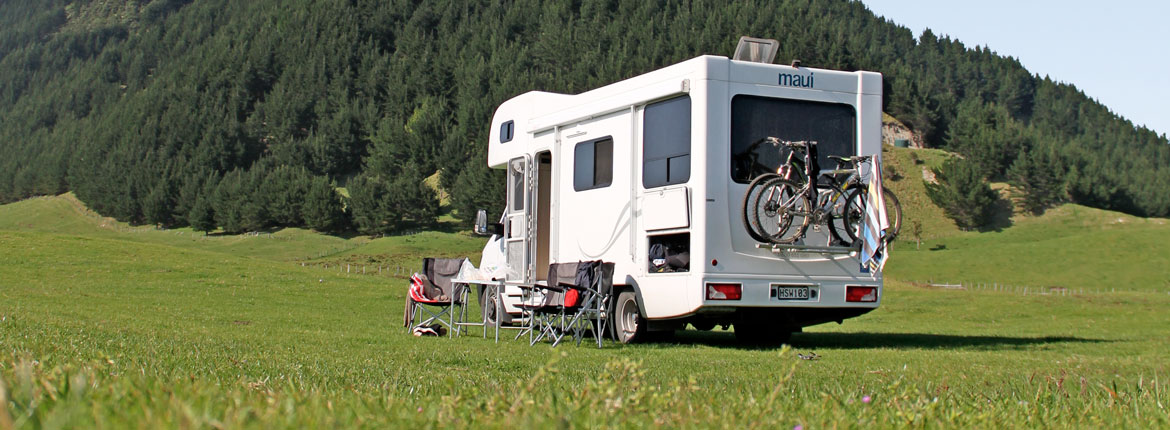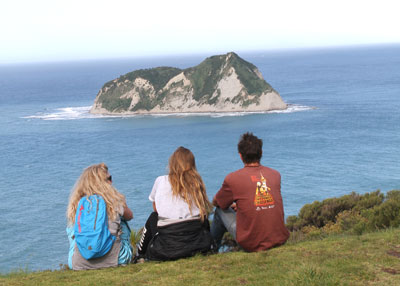
Road trip: A family affair
Sara Carbery takes her family on the road with two missions to accomplish. They want to tick off a point on the compass and experience a perfect sunrise.
North, south, east and west – we’d ticked off three of the four.
We’d travelled to New Zealand’s far flung edges over the course of a decade, but not to the shark fin of the East Cape. The compulsion to complete the picture before our eldest child leaves home motivates us to set off in a hired campervan with the East Cape lighthouse in our sights.
We have another goal too: to bag a perfect sunrise. Ohiwa marks the start of unexplored territory for us, and we’re hoping to set up camp before dark. But the road east is slower going than expected, and it’s pitch black by the time we pull into the campground, 100 kms east of Opotiki. The glow of a fire guides us down to a line of pohutukawa where we settle in for the night, rocked to sleep by the wind.
While the morning doesn’t bring the sunrise we’d hoped for – we aren’t on the right side of the cape to see one – it does bring that Christmas morning feeling you get waking up somewhere new. The wind and rain of the night before have abated, and through the back window of a camper that already feels like home, the beach beckons us with our cups of tea.
Toilet seat closed, skylights wound down and fridge locked shut (lessons quickly learnt on these winding roads), we rumble back up on to State Highway 35.
With time on our hands, we detour down side roads that hold the promise of surf. The road to Lottin Point is one such deviation, depositing us at the end of a no-exit road above a family fishing in clear waters. ‘Possibly the best fishing spot in New Zealand,’ I’m unsurprised to later read.
Further on, we stock up at the Hicks Bay general store. Laid back and low-key, a visit to this tiny township is like stepping back in time; in fact the whole of the East Cape transports you back to a simpler age.
Isolated from the rest of New Zealand, it feels like an island; a geographical time capsule, where baches are baches, horses run free, and te reo carries across the water.

We can’t drive through Te Araroa without visiting Te Waha o Rerekohu, reputed to be New Zealand’s oldest and largest pohutukawa. But we don’t linger; we have a lighthouse to see.
Squeezed between the rocky coast and the hills, the largely unsealed road from Te Araroa to East Cape leads us to a farmhouse. We debate whether to leave the climb till morning and to watch the sunrise from the lighthouse, but decide we can do that just as well from the campsite we’d spotted a few kilometres back.
We set off to complete our mission, reminiscing on the 700-step climb about earlier trips; in a borrowed Chevy truck to Cape Reinga and Cape Egmont, and to Bluff in our station wagon. Standing at the base of the lighthouse looking seaward from mainland New Zealand’s most easterly point, it feels good to have finally slotted the last piece of the puzzle into place.
Home for the night is the barren but beautiful East Cape campsite, parked amidst cow pats and thistles. We sleep to the sound of the waves just beyond the dunes.
Day three dawns cloudy, but never mind, we console ourselves, we aren’t facing the right direction anyway. Tucked in at the top of the cape, we’re looking north.
Hopes high that our final night will yield an east-facing campsite and a clear sky, we head south, lunching and swimming at Anaura Bay and walking the iconic Tolaga Bay wharf.
Arriving at Waihau Bay in the early afternoon, we revel in the fact the East Cape has saved its best till last. A perfect beach with a perfect surf break beckons beneath a perfect blue sky. We have the rest of the day free, and the whole place to ourselves.
Later, with the table once again metamorphosed into a bed, we set the alarm for 15 minutes before dawn.In the morning, the East Cape delivers a faultless sunrise; complete with a green flash.
Reported by Sara Carbery for our AA Directions Summer 2018 issue
